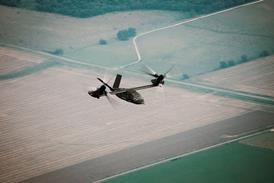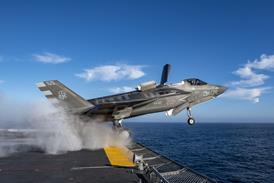RAMON LOPEZ / WASHINGTON DC
Strategy review outlines additional measures to ensure the nation's security and boost presence in Asia-Pacific
The US administration has revealed its blueprint on future military strategy in the Quadrennial Defense Review (QDR) report. The defence doctrine, modified after 11 September, calls for greater emphasis on homeland defence.
The review calls for additional measures, beyond development of a Ground-based Midcourse Defense Segment (GMDS), formerly known as the National Missile Defense programme, and theatre missile defence programmes, to counter attacks on the USA by "rogue nations". The QDR also spotlights an expanded US military presence in the Asia-Pacific region.
The report does not address the fate of costly weapons programmes just entering production or in research and development, such as the Lockheed Martin/Boeing F-22 Raptor fighter and the Joint Strike Fighter. A senior US defence official who helped write the final report says the idea was to not produce "a budget-driven or platform-driven look". He says defence secretary Donald Rumsfeld and President George Bush instead wanted "a strategic perspective on what it is we wanted to do".
The official says the QDR helps "lay the foundation for the review now of the programmes that are in hand and those that are being proposed, and gives us a basis now for judging which, if any of them, we are going to continue, and in what way". Parts of the report were rewritten after the terrorist attacks. "We live in an age in which the availability of the means of conducting surprises abounds." As a result, the QDR also considers weapons of mass destruction, including biological and chemical agents.
The size of the US military will remain about the same and its "forces will remain capable of swiftly defeating attacks against US allies and friends in any two theatres of operation in overlapping timeframes", the QDR says.
The review backs the US Army's move to transform its combat divisions into lighter, more mobile forces and a US Navy plan to increase the presence of aircraft carrier battlegroups in the Western Pacific.
It concludes that investments in intelligence, surveillance, and reconnaissance initiatives must be bolstered. "Also, emphasis must be placed on manned and unmanned long-range precision strike assets, related initiatives for new small munitions, and the ability to defeat hard and deeply buried targets."
Source: Flight International























